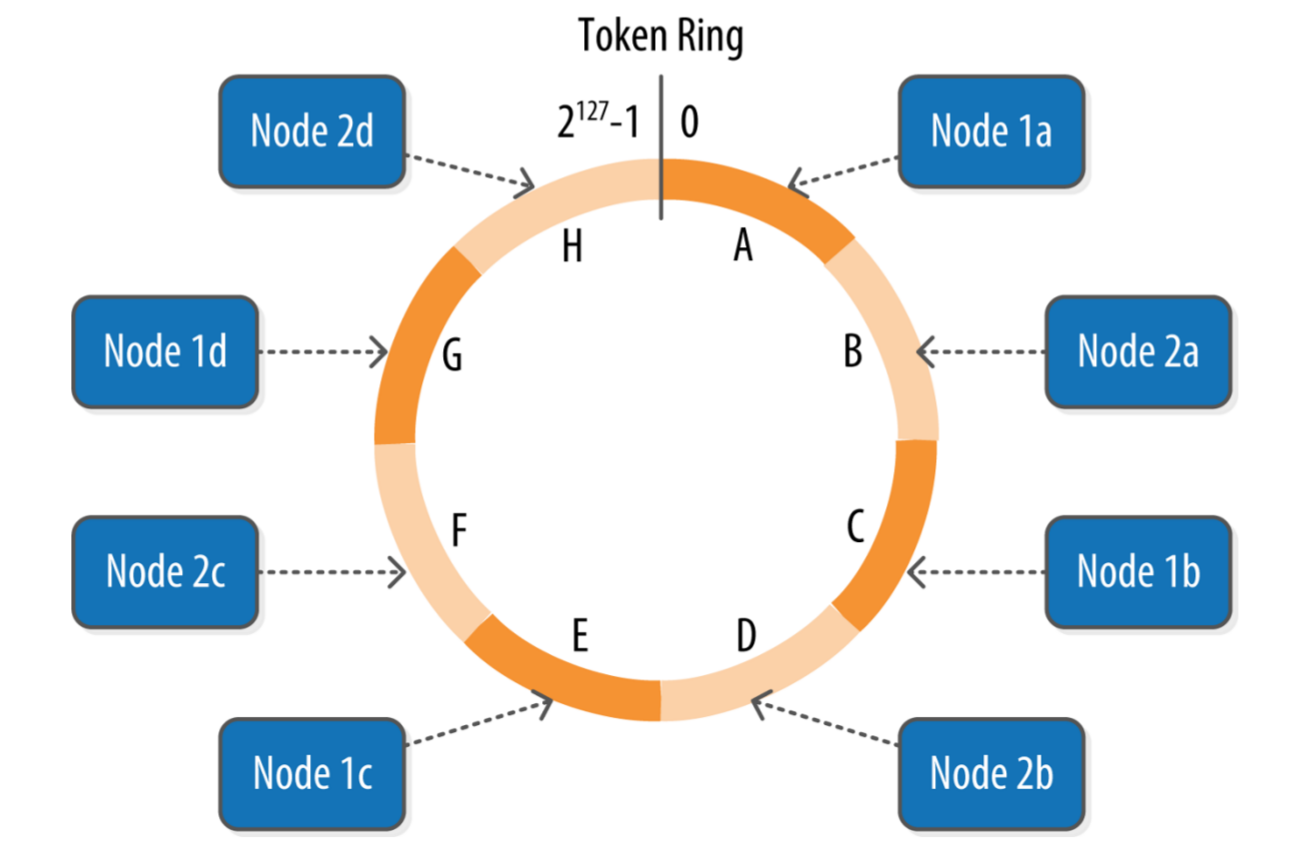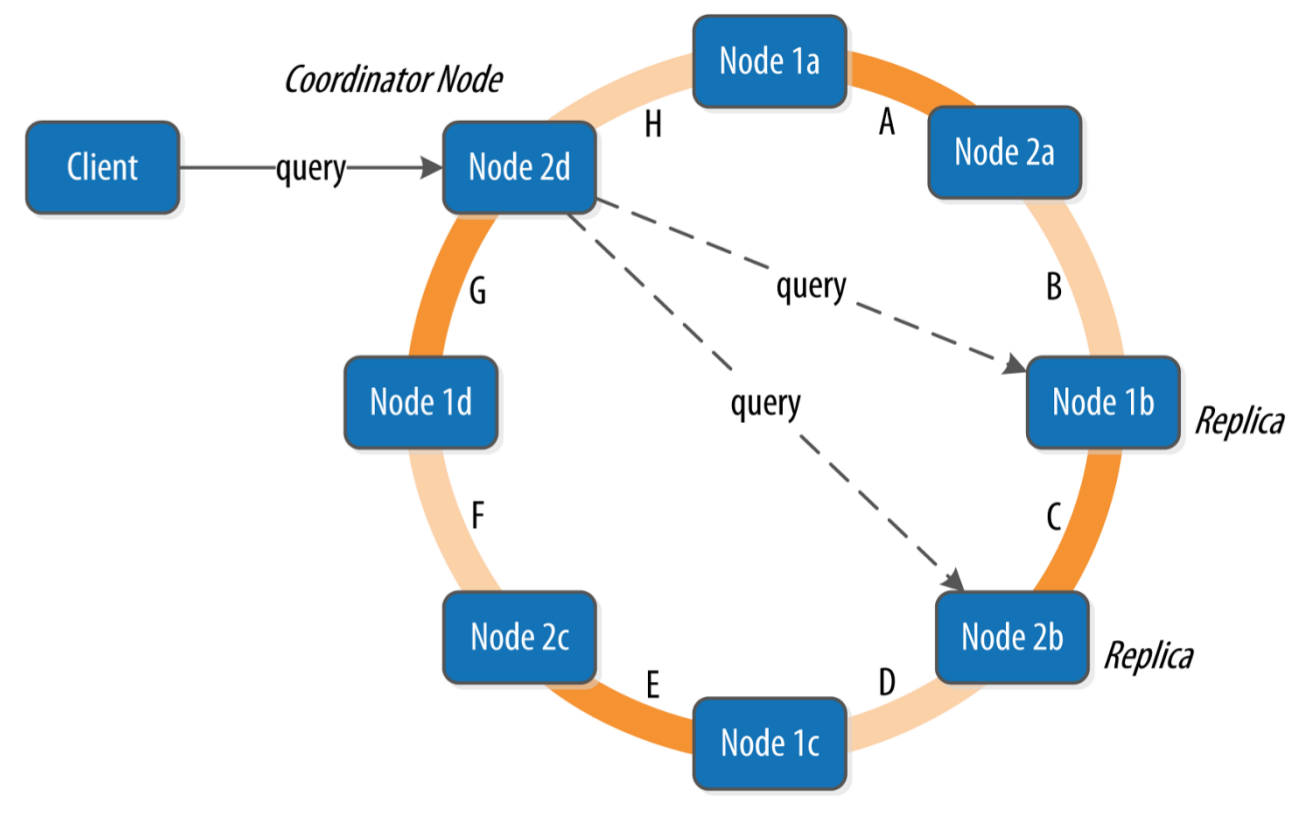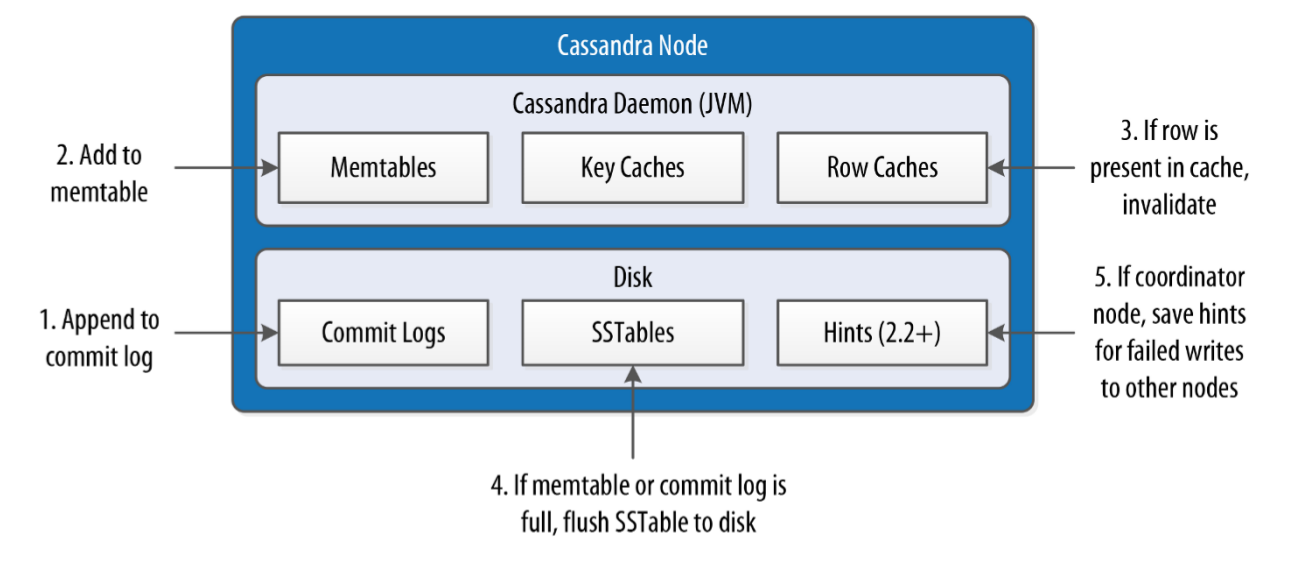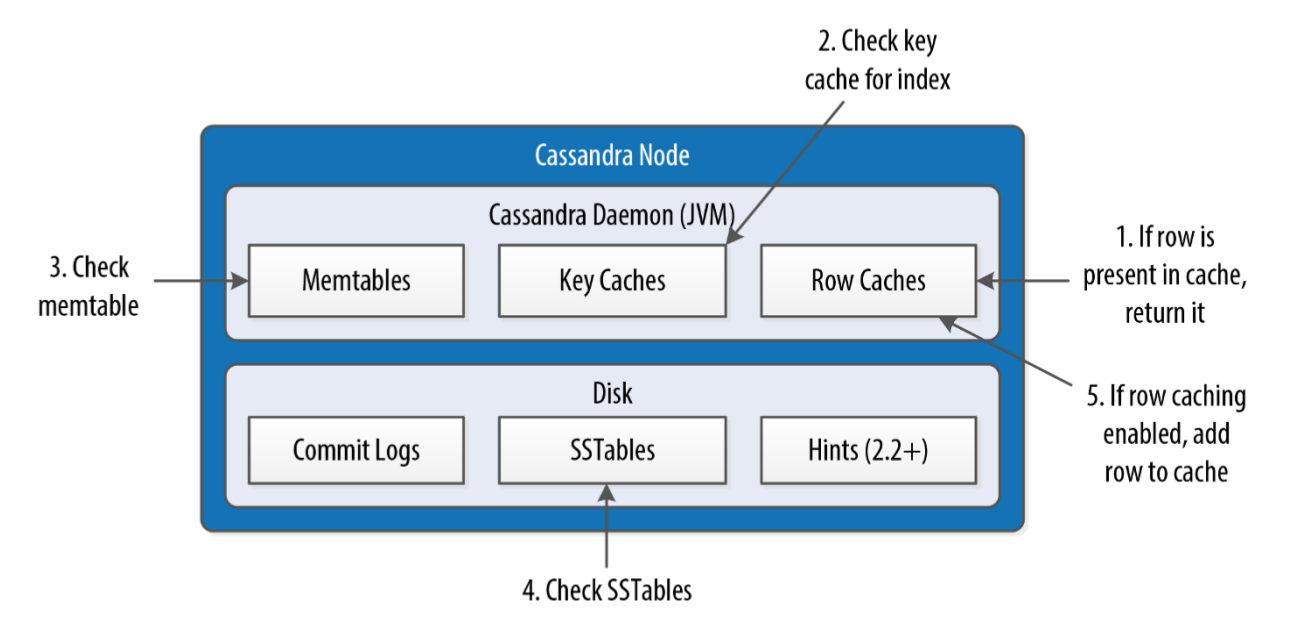Cassandra is a distributed database for managing large amounts of structured data across many commodity servers, while providing highly available service and no single point of failure
Resources
-
Cassandra: The Definitive Guide (2016)(4th) by Eben Hewitt, Jeff Carpenter (Book)
-
A Big Data Modeling Methodology for Apache Cassandra (Paper)
-
Difference between partition key, composite key and clustering key
Cassandra uses a tick-tock release model, even-numbered releases are feature releases, while odd-numbered releases are focused on bug fixes
Architecture
-
A rack is a logical set of nodes in close proximity to each other
-
A data center is a logical set of racks
-
Cassandra uses a gossip protocol (called epidemic protocol) that allows each node to keep track of state information about the other nodes in the cluster implementing an algorithm called Phi Accrual Failure Detection instead of simple heartbeats
-
The job of a snitch is to determine relative host proximity for each node in a cluster, which is used to determine which nodes to read and write from
-
Cassandra represents the data managed by a cluster as a ring. Each node in the ring is assigned one or more ranges of data described by a token, which determines its position in the ring and is used to identify each partition

-
virtual nodes allow to break a token range and assign multiple tokens to a single physical node
-
A partitioner is a hash function for computing the token of a partition key and determines how a (wide) row or partition of data is distributed within the ring
-
The replication factor is the number of nodes in a cluster that will receive copies of the same row and the replication strategy is set independently for each keyspace
-
Cassandra provides tuneable consistency levels and must be specified on each read or write
-
A client may connect to any node in the cluster, named coordinator node, to initiate a read or write query. The coordinator identifies which nodes are replicas for the data and forwards the queries to them

-
When a write operation is performed, it's immediately written to a commit log to ensure that data is not lost. It is a crash-recovery mechanism only, clients never read from it
-
After it's written to the commit log, the value is written (already ordered) to a memory-resident data structure called the memtable divided by Column Family (table)
-
When the number of objects stored in the memtable or in the commit log reaches a threshold, the contents of the memtable are flushed (non-blocking operation) to disk in a file called SSTable and a new memtable or commit log is then created/recycled
-
No reads or seeks of any kind are required for writing a value to Cassandra because all writes are append operations to immutable SSTables. However, periodic compaction operations in Cassandra are performed in order to support fast read performance: the keys are merged, columns are combined, tombstones are discarded, and a new index is created
-
The key cache stores a map of partition keys to row index entries, facilitating faster read access into SSTables stored on disk. The key cache is stored on the JVM heap
-
The row cache caches entire rows and can greatly speed up read access for frequently accessed rows, at the cost of more memory usage. The row cache is stored in off-heap memory
-
The counter cache is used to improve counter performance by reducing lock contention for the most frequently accessed counters
-
In a scenario in which a write request is sent to Cassandra, but a replica node where the write properly belongs is not available due to network partition, hardware failure, or some other reason, to ensure general availability Cassandra implements a feature called hinted handoff. The coordinator node while store temporarily the data until it detects that the node is available again
Write Path 
Read Path 
-
To provide linearizable consistency e.g. read-before-write, Cassandra supports a lightweight transaction or LWT. The implementation is based on paxos and is limited to a single partition
-
A tombstone is a deletion marker that is required to suppress older data in SSTables until compaction or garbage collection run. Data is not immediately deleted but it's treated as an update operation
-
Bloom filters are very fast, non-deterministic algorithms for testing whether an element is a member of a set. It is possible to get a false-positive read, but not a false-negative. When a read is performed, the filter is checked first before accessing disk, if it indicates that the element does not exist in the set, it certainly doesn't, but if the filter thinks that the element is in the set, the disk is accessed to make sure
-
Replica Synchronization (1) Cassandra reads data from multiple replicas in order to achieve the requested consistency level and detects if any replicas have out of date values. If an insufficient number of nodes have the latest value, a read repair is performed immediately to update the out of date replicas
-
Replica Synchronization (2) Anti-entropy repair is a manually initiated operation performed on nodes as part of a regular maintenance process executed with nodetool causing a major compaction during which a node exchange Merkle trees with neighboring nodes
Setup
Single Node Cluster
# change path cd devops/cassandra # start single node docker-compose up # paths /etc/cassandra /var/lib/cassandra /var/log/cassandra # remove container and volume docker rm -fv devops-cassandra
Multi Node Cluster
# change path
cd devops/cassandra
# start node
docker-compose -f docker-compose-cluster.yml up
# optional mounted volumes
mkdir -p \
.cassandra/cassandra-seed/{data,log} \
.cassandra/cassandra-node-1/{data,log} \
.cassandra/cassandra-node-2/{data,log}
tree .cassandra/
# ISSUES releated to host permissions
# > Small commitlog volume detected at /var/lib/cassandra/commitlog
# > There is insufficient memory for the Java Runtime Environment to continue
(cassandra) /var/lib/cassandra
(root) /var/log/cassandra
Access container
# access container docker exec -it devops-cassandra bash docker exec -it devops-cassandra bash -c cqlsh docker exec -it devops-cassandra-seed bash docker exec -it devops-cassandra-node-1 bash # execute cql script from host (docker exec -i devops-cassandra bash \ -c "cat > example.cql; cqlsh -f example.cql") < cql/example_create.cql
CQL
cqlsh script examples
# connect cqlsh localhost 9042 cqlsh localhost 9042 -u cassandra -p cassandra # execute cql script cqlsh -f cql/example_create.cql # info SHOW VERSION; DESCRIBE CLUSTER; DESCRIBE KEYSPACES; DESCRIBE KEYSPACE example; DESCRIBE TABLE example.messages; # nice format EXPAND ON; # trace query TRACING ON; # bulk loading COPY example.users TO '/cql/users.csv' WITH HEADER=TRUE; COPY example.users FROM '/cql/all_users.csv' WITH DELIMITER = ';'; COPY example.users (first_name,last_name,addresses,emails,enable) FROM '/cql/column_users.csv' WITH HEADER=TRUE; # automatic paging PAGING; PAGING ON; PAGING 100; # limit SELECT * FROM example.users LIMIT 1;
Old cassandra-cli deprecated and removed in Cassandra 3.0
USE keyspace_name; LIST table_name; GET table_name["primary_key"]; SET table_name["primary_key"]["column_name"];
# help nodetool # cluster informations nodetool describecluster nodetool status # node informations nodetool -h xxx.xxx.xxx.xxx info nodetool -h xxx.xxx.xxx.xxx statusgossip|statusthrift|statusbinary|statushandoff nodetool gossipinfo # ring informations nodetool ring nodetool describering KEYSPACE # monitor network nodetool netstats # threadpool statistics nodetool tpstats # keyspace statistics nodetool tablestats KEYSPACE # dynamic logging via JMX nodetool getlogginglevels # force to write data from memtables to SSTables nodetool flush # gracefully shutdown nodetool drain # discards any data that is no longer owned by the node # e.g. after changing replication factor or token range nodetool cleanup # anti-entropy repair or manual repair: reconcile data exchanging Merkle trees among nodes # maintenance: incremental parallel repair on the primary token range (run on each node) nodetool repair -pr # create snapshot nodetool snapshot nodetool listsnapshots # restore snapshot (create schema or truncate table before) # 1) same cluster and configuration # copy SSTable ".db" files into the data directory and on the running node execute refresh nodetool refresh # 2) different configuration (e.g. topology, token ranges, or replication) sstableloader # stress tool cassandra-stress write n=1000000 cassandra-stress read n=200000







